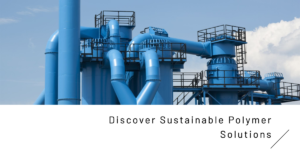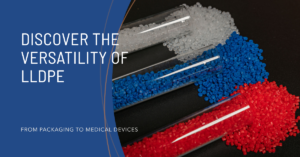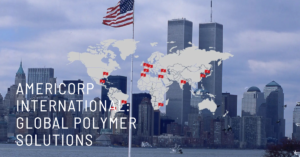Table of Contents
Plastic resins play a crucial role in the packaging industry, offering a wide range of properties that meet different packaging requirements. When it comes to choosing the right plastic resin for your packaging needs, HDPE (High-Density Polyethylene), LDPE (Low-Density Polyethylene), and PET (Polyethylene Terephthalate) are three commonly used options. In this article, we will compare and contrast these three plastics, exploring their advantages, disadvantages, and suitability for various packaging applications.
HDPE (High-Density Polyethylene)
HDPE is a versatile plastic resin known for its high strength-to-density ratio. It is commonly used in packaging due to its excellent resistance to moisture, chemicals, and impact. HDPE is widely utilized for bottles, containers, caps, and closures. Its rigidity and durability make it suitable for packaging products that require robust protection.
The advantages of HDPE for packaging applications include its strong barrier properties, which help to preserve the contents and prevent leakage. HDPE is also lightweight, making it cost-effective for transportation. Furthermore, it is widely recyclable, contributing to sustainable packaging practices. With HDPE, you can find packaging solutions that offer both durability and environmental benefits.
However, HDPE does have some disadvantages. It may not be as flexible as other plastic resins, limiting its use in certain packaging applications that require bending or folding. Additionally, HDPE may not provide the same level of transparency as other resins, which can be a consideration for products that rely on showcasing their content.
Real-life examples of packaging products made from HDPE include detergent bottles, shampoo containers, and motor oil jugs. These products benefit from HDPE’s robustness and resistance to chemicals, ensuring the safe storage and transportation of their contents.
LDPE (Low-Density Polyethylene)
LDPE is a plastic resin known for its flexibility and toughness. It is commonly used in packaging applications that require squeeze bottles, flexible films, and bags. LDPE’s ability to stretch and bend makes it ideal for products that need to accommodate various shapes and sizes.
The advantages of LDPE in packaging are its flexibility and resistance to impact. LDPE packaging can withstand bending and folding without breaking or tearing, offering convenience to consumers. Additionally, LDPE provides good moisture resistance, keeping the packaged contents protected from external elements.
Despite its advantages, LDPE has some limitations. Compared to HDPE, it may have lower tensile strength and be more prone to scratches or punctures. LDPE is also less rigid, which can affect the stability of certain products during transportation or storage.
Examples of packaging products made from LDPE include squeeze bottles for cosmetics, plastic wrap for food preservation, and flexible packaging for snack items. These products benefit from LDPE’s flexibility and ability to conform to different shapes, making them user-friendly and versatile.
PET (Polyethylene Terephthalate)
PET is a widely used plastic resin known for its transparency and strength. It is commonly used in packaging applications for beverages, food, and personal care products. PET provides excellent barrier properties against oxygen and carbon dioxide, ensuring the freshness and shelf life of the packaged contents.
Advantages of PET for packaging include its transparency, which allows consumers to see the product inside. PET is also lightweight, reducing transportation costs. Additionally, PET is highly recyclable and can be processed into various forms, including fibers for textiles and packaging materials for non-food applications.
One of the disadvantages of PET is its lower resistance to heat compared to HDPE and LDPE. High temperatures can cause PET to deform or lose its clarity, limiting its suitability for certain packaging applications that involve hot-fill processes.
Real-life examples of packaging products made from PET include water bottles, soda bottles, salad dressing containers, and personal care product containers. These products benefit from PET’s transparency and barrier properties, providing an appealing visual experience for consumers while preserving the quality of the packaged contents.
Comparison of HDPE, LDPE, and PET
Now, let’s compare HDPE, LDPE, and PET based on several important factors:
Durability comparison
HDPE: High durability, resistant to impact and chemicals.
LDPE: Good durability, but may be more prone to scratches or punctures.
PET: Moderate durability, but can deform at high temperatures.
Flexibility comparison
HDPE: Less flexible compared to LDPE and PET.
LDPE: Highly flexible and can accommodate various shapes and sizes.
PET: Moderate flexibility, suitable for certain packaging applications.
Recyclability comparison
HDPE: Widely recyclable, contributing to sustainable packaging practices.
LDPE: Recyclable but less commonly recycled compared to HDPE.
PET: Highly recyclable, with various recycling applications beyond packaging.
Cost comparison
HDPE: Cost-effective, suitable for a wide range of packaging applications.
LDPE: Moderately priced, flexible packaging may incur additional costs.
PET: Moderately priced, cost-effective for transparent packaging needs.
When choosing the right plastic resin for your packaging needs, it is essential to consider these factors and align them with your specific requirements.
Choosing the Right Plastic Resin for Your Packaging Needs
To choose the most suitable plastic resin for your packaging needs, consider the following factors:
- Product requirements: Assess the durability, flexibility, and transparency needed for your packaging.
- Environmental considerations: Determine the recyclability and sustainability goals of your packaging.
- Cost considerations: Evaluate the budget and cost-effectiveness of different resin options.
- Regulatory compliance: Ensure the chosen resin complies with applicable regulations and standards.
- Customer preferences: Understand your target market and their preferences for packaging materials.
Based on these factors, HDPE is a suitable choice for products that require durability and resistance to chemicals. LDPE is ideal for flexible packaging needs that involve bending and squeezing. PET is a good option for transparent packaging requirements and offers barrier properties.
Case studies and examples from various industries can further illustrate the appropriate resin choice for specific packaging needs. By understanding the characteristics and suitability of HDPE, LDPE, and PET, you can make an informed decision that aligns with your packaging requirements.
Conclusion
Choosing the right plastic resin for packaging is essential to meet specific product needs, ensure durability, and align with sustainability goals. HDPE, LDPE, and PET are commonly used plastics in the packaging industry, each with its own advantages and disadvantages.
HDPE provides robustness and resistance to chemicals, making it suitable for various packaging applications. LDPE offers flexibility and convenience for products that require bending and squeezing. PET offers transparency and barrier properties, maintaining product freshness.
By considering factors such as durability, flexibility, recyclability, and cost, businesses can select the most suitable plastic resin for their packaging needs. Understanding the unique properties and applications of HDPE, LDPE, and PET enables businesses to make informed decisions and provide effective packaging solutions.
Which plastic resin is commonly used for beverage bottles?
PET (Polyethylene Terephthalate) is commonly used for beverage bottles, including water bottles and soda bottles. Its transparency, strength, and barrier properties make it suitable for storing beverages while providing a visually appealing experience for consumers.
What is the main advantage of PET in packaging?
The main advantage of PET (Polyethylene Terephthalate) in packaging is its transparency. PET allows consumers to see the product inside the packaging, which can be visually appealing. It also provides excellent barrier properties against oxygen and carbon dioxide, ensuring the freshness and shelf life of the packaged contents.
Is LDPE suitable for transparent packaging?
LDPE (Low-Density Polyethylene) is not known for its transparency. It is commonly used for flexible packaging such as squeeze bottles, plastic wrap, and snack packaging. If transparency is a key requirement, PET (Polyethylene Terephthalate) is a more suitable choice.
Can HDPE be used for flexible packaging?
HDPE (High-Density Polyethylene) is less flexible compared to LDPE and PET, which makes it less suitable for flexible packaging applications that involve bending or folding. It is better suited for rigid packaging products that require durability and resistance to chemicals.
Which plastic resin is the most environmentally friendly?
PET (Polyethylene Terephthalate) is highly recyclable and can be processed into various forms, making it one of the most environmentally friendly plastic resins. It contributes to sustainable packaging practices and has recycling applications beyond packaging as well.








